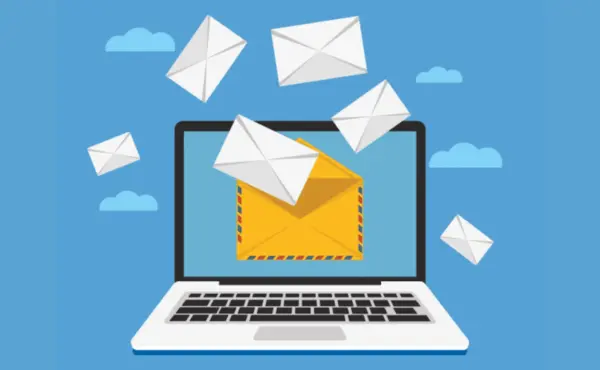Yes, Boost Inbox is designed to cater to businesses of all sizes and industries.

- What is Email Deliverability?
- Why Do You Need an Email Deliverability Tool?
- What Email Deliverability Rate Is Considered High?
- Factors Affecting Your Email Deliverability Rate
- Email Deliverability Tool Features
- 12 Best Email Deliverability Tools in 2024
- How to Choose Your Email Deliverability Tools?
- Final Thoughts
- FAQs
- Sources:
Your emails need to reach their destination. It's heartbreaking when your carefully created messages never reach your customers. Every day, countless important emails end up in spam folders, leaving businesses frustrated and opportunities lost. Fortunately, there are effective solutions to ensure your emails reach their intended recipients.
Enter email deliverability tools, your trusted partners in making sure your messages find their way home to your customers' inboxes. Email deliverability tools act as a guide, ensuring your messages navigate through spam filters and blacklists to reach the inbox.
Join us as we uncover 2024's best email deliverability tools, packed with features like email authentication, IP reputation monitoring, and email list cleaning. Let's make sure your emails don't just get sent – they get seen!
What is Email Deliverability?
Email deliverability is like a GPS for your emails. It makes sure your messages land in inboxes instead of getting lost in spam folders or disappearing completely. Imagine sending a party invite to friends—you want them to actually receive it, right? Email deliverability tools do the same for business emails, helping them reach the right people.
According to EmailToolTester's 2024 report, the average email deliverability rate across industries is approximately 83%, meaning 17 out of 100 emails never reach the inbox. This means that out of 100 emails sent, 17 never make it to the inbox. That’s a lot of lost messages! By improving deliverability, you can avoid missing out on important connections and opportunities. Simple steps, like keeping your email list clean and writing clear subject lines, can make a big difference.
Why Do You Need an Email Deliverability Tool?
Sending emails without deliverability tools is like sending a letter with no address—you’re not sure where it’s going, or if it will even reach its destination. These tools make sure your emails land in the inbox, not the spam folder, so people actually see them.
According to EmailToolTester's 2024 report, businesses that use deliverability tools see a 15-25% improvement in inbox placement. This means more emails are seen by the right people, which leads to better engagement and results. Without these tools, you risk missing out on important connections and opportunities. In short, email deliverability tools are a must for making your email campaigns successful. They’re like a GPS that helps your emails get to the right place. Here's a detailed look at why these tools are important:
Email Authentication
Think of email authentication like your digital ID card. Without it, inbox providers might question whether your email is trustworthy. Email deliverability tools assist in configuring essential authentication protocols, including SPF, DKIM, and DMARC, to verify your sender identity.
- SPF (Sender Policy Framework): This is like having a list of trusted mail carriers.
- DKIM (DomainKeys Identified Mail): Think of it as putting your official seal on your emails.
- DMARC (Domain-based Message Authentication): This acts as your email’s security guard.
According to a study by Validity, emails with proper authentication are 70% more likely to reach the inbox. For example, a small business that set up all three methods saw its delivery rate increase from 82% to 96% in just two months. This is important for improving your email reputation and avoiding the spam folder.
IP Reputation Monitoring
Your IP reputation reflects the trustworthiness of your email-sending practices, similar to how a credit score reflects financial reliability. It shows how trustworthy your emails are. Email deliverability tools watch this score and alert you when there’s a problem. They track things like:
- Sending patterns
- Complaint rates
- Spam trap hits
- Blacklist status
For example, a marketing agency used their tool to find out their IP was blacklisted. They fixed it fast and saved around $50,000 in lost revenue from undelivered emails.
Domain Sender Score Tracking
Think of this as your email report card. Tools measure your domain's reputation on a scale from 0 to 100. According to Return Path, senders with scores above 90 have inbox placement rates of 92%. These tools track:
- Past sending patterns
- How people engage with your emails
- Complaint rates
- How your email setup is structured
Spam Content Analysis
Every email you send has to pass email spam filters. These filters check for certain spam trigger words, phrases, or content that might make your email look suspicious. Spam content analysis tools help analyze your email content and offer recommendations for improving your chances of landing in the inbox. They look for things like:
- Spammy words (like "Free!", "Act Now!", or too many exclamation marks!!!)
- The balance between images and text
- The quality of links
- How your content is structured
For example, one company reduced their spam placement rate by 43% after addressing issues identified by their spam checker.
Email Deliverability Testing
Testing is an important part of improving your email deliverability. Email deliverability testing tools simulate the sending of emails to see how they perform across different email clients and spam filters. This gives you a clear idea of what works and what doesn’t, helping you optimize your emails for better delivery.Before you send emails to everyone, these tools help you test them first. Testing your emails beforehand ensures they are optimized for delivery and engagement. They check:
- How your email looks on different email platforms
- If spam filters will block it
- Whether your authentication is set up correctly
- How it appears on mobile devices
Studies show that companies who test their emails often get 23% more opens.
Inbox Placement Analysis
Where do your emails end up? In the inbox? The spam folder? Or nowhere? These tools tell you exactly where your emails go with different providers like:
- Gmail
- Yahoo
- Outlook
- Corporate email servers
For example, a retailer found that their emails were going to spam in Gmail (where most of their customers were) and fixed it before their holiday sale.
Email List Hygiene
Keeping your email list clean is key to better delivery. Tools help by:
- Removing invalid email addresses
- Finding spam traps
- Cleaning up bounced emails
- Updating old or changed addresses
When you maintain a clean list, your emails are more likely to reach the right people. In fact, companies with well-maintained email lists see up to 25% higher delivery rates. By keeping your list updated and free of errors, you reduce the chances of emails bouncing or being marked as spam. This helps ensure your messages reach inboxes, not junk folders. Using email list hygiene tools keeps your campaign results strong and your reputation intact.
Bounce Rate Handling
Emails bounce for different reasons. Tools help you understand and fix these issues:
- Hard bounces (permanent problems)
- Soft bounces (temporary issues)
- Block bounces (server rejections)
- Technical bounces (configuration errors)
A good bounce rate should stay under 2%. These tools help keep your bounce rates low by identifying the causes and helping you fix them. This ensures your emails are more likely to reach their destination.
Feedback Loops Monitoring
Feedback loops let you know when people mark your emails as spam. These tools help by:
- Alerting you to complaints
- Finding problem emails or campaigns
- Giving suggestions for fixing issues
- Automatically removing people who complain
To stay in the best range, keep spam complaints under 0.1%. This helps keep your reputation strong and your emails delivered. When you use feedback loops, you can quickly catch and fix problems, ensuring your emails don’t end up in spam folders.
Email Reputation Analysis
Using a professional email warmup service can significantly improve your sender reputation scores. Your email reputation is based on several factors, including engagement metrics, complaint rates, and spam trap hits. Regular email reputation analysis can help you stay ahead of any issues and keep your emails out of spam folders. Email reputation tools help you track the health of your email program. They look at:
- How often you send emails
- How people interact with your emails (opens, clicks)
- Whether your emails are properly authenticated
- How your email setup is organized
By checking these, you can find problems early and improve your email delivery. A strong email reputation means your messages land in inboxes and get read. These tools make sure your emails perform well and don’t end up in spam.
Email Deliverability Reporting
Regular email deliverability reporting gives you a clear picture of your email performance. These reports include important metrics like open rates, bounce rates, and spam complaints, helping you fine-tune your email campaigns.Reports are like your email health check! They help you:
- Track delivery rates
- See how many people open or click your emails
- Understand how people engage with your emails
- Spot patterns and trends
For instance, a B2B company increased their revenue by 32% just by changing when they sent their emails, all thanks to these reports. With good reports, you can easily spot what’s working and improve your email game!
A/B Testing
A/B testing lets you try out different versions of your emails to find what works best. You can test email reputation things like:
- Subject lines
- Send times
- Content layouts
- Call-to-action buttons
By regularly A/B testing, companies can see up to 37% better engagement rates. It’s like experimenting with different approaches to find the perfect formula for your audience. By conducting A/B tests, you can optimize your emails for better engagement rates and deliverability.
Compliance Monitoring
Following email laws is really important. Tools can help you stay on track with rules like:
- CAN-SPAM Act
- GDPR
- CASL
- Local laws
For example, one company avoided a $250,000 fine by catching mistakes before sending emails.
In fact, businesses using these tools often see a 42% boost in their email marketing results, according to Validity’s 2024 Email Deliverability Benchmark. These tools aren’t just useful—they’re key to email marketing success!
What Email Deliverability Rate Is Considered High?
Email deliverability is key to your campaign's success. According to EmailToolTester's 2024 benchmark report, here's how your rates stack up:
- 95% or higher: Excellent
- 90-95%: Very Good
- 80-90%: Needs Improvement
- Below 80%: Poor
A high deliverability rate ensures more people see your emails. If you're below 90%, it's time to work on improving your email strategy!
Factors Affecting Your Email Deliverability Rate
Factors like sender reputation, SPF, and DKIM play a important role in email deliverability success.
Email Sender Reputation
Warming up email address gradually is important for establishing trustworthy sender status. Your email sender reputation works like a credit score for your emails. A study by Return Path found that senders with a strong reputation see 20% better inbox placement. If your reputation is bad, emails can end up in spam.
Sender Policy Framework (SPF)
SPF is like a hall pass for your emails. It tells email providers that you're authorized to send emails from your domain. According to DMARC Analyzer, using SPF can improve email deliverability by up to 10%. Without SPF, your emails are more likely to be flagged as spam.
DomainKeys Identified Mail (DKIM)
DKIM adds a digital signature to your emails, kind of like sealing a letter with wax. This helps prove your email is legit. This process helps improve your email domain reputation and prevent email spoofing. Research by Validity shows that DKIM implementation can improve email delivery by up to 8%. Without it, your emails might get rejected or sent to spam.
Each of these factors plays a huge role in whether or not your emails make it to the inbox. Implementing proper email authentication can increase your chances of successful delivery and better engagement.
Email Deliverability Tool Features

When sending emails, you want to make sure they get to your recipients' inboxes. Email deliverability software can help you with that! These tools offer several important features that improve email deliverability and engagement rates.
Sender Reputation Monitoring
Your sender reputation is like a credit score for your emails. If your reputation is low, your emails might land in the spam folder. Sender reputation monitoring tools keep track of how your emails are performing. They monitor things like bounce rates, complaint rates, and email engagement. This helps detect issues early and ensures your emails stay in good standing, improving inbox placement. A reliable email warm-up solution helps establish and maintain a strong sender reputation.
Spam Testing and Content Analysis
No one likes their emails going to spam. Using spam testing tools helps ensure your emails won’t be flagged. These tools scan for things like spam trigger words (like "Free!" or "Buy Now!") and check your email content for any issues. They also analyze the image-to-text ratio, ensuring your email looks professional. If there are any email deliverability issues, these tools will alert you so you can fix them and increase deliverability rates.
Blacklisting and Whitelisting Checks
Blacklisting can hurt your sender reputation. If your IP or domain gets blacklisted, your emails won’t make it to your recipients' inboxes. Whitelisting, on the other hand, increases your chances of successful delivery. Email deliverability tools check your IP and domain against blacklists and whitelists. This helps prevent issues and allows you to quickly fix any problems, keeping your emails out of the spam folder.
Authentication Checks
Authentication is important to prove your emails are legitimate. SPF, DKIM, and DMARC are authentication methods that verify your sender identity. SPF ensures that emails are sent from authorized servers, DKIM adds a digital signature to verify the email, and DMARC ensures everything is working together. Authentication checks ensure your emails pass these security tests. This boosts your email sender score, helping your emails land in the inbox instead of the spam folder.
Bounce Management
Emails bounce for many reasons. Some bounces are permanent (hard bounces), while others are temporary (soft bounces). Bounce management tools help track and manage these bounces. They allow you to remove invalid or outdated email addresses from your list, improving your email deliverability rate. By cleaning up your email list, you can increase engagement and keep your sender reputation strong.
Engagement Tracking
Tracking how recipients engage with your emails is key to improving your campaigns. Engagement tracking tools monitor metrics like open rates, click-through rates, and spam complaints. By analyzing these, you can learn what works and what doesn’t. If your email campaigns are getting high engagement, you’ll see better results. Tracking email engagement metrics can help you improve your open rates, keep your spam complaints low, and ensure your emails stay in the inbox.
With these features, email deliverability tools ensure your emails are delivered effectively, improving both engagement rates and inbox placement. These tools help you stay on top of your email game by keeping your sender reputation high and avoiding spam filters.
12 Best Email Deliverability Tools in 2024

Let's take a deeper look at each of these amazing tools and what makes them special. Remember, just like choosing the right shoes for different activities, different email deliverability services work better for different needs.
1. Boost Inbox
Boost Inbox is perfect for businesses starting with email marketing. It helps warm up your sender reputation, authenticate emails, and improve inbox placement to keep emails out of spam.
Key Features:
- Email warm-up to build trust
- Real-time sender score tracking
- Simple dashboard for easy monitoring
- Spam trigger detection to improve inbox rates
With Boost Inbox, you send smarter and reach more people effortlessly.
2. SendGrid
SendGrid is an email tool with a lot of experience. It helps improve your email delivery through easy-to-use features.
Key Features:
- Email Authentication: Ensures your emails are verified.
- Bounce Tracking: Monitors and fixes bounced emails.
- Real-Time Analytics: Instant reports on how your emails perform.
- API Integration: Easy connection to your system.
SendGrid boosts your IP reputation and sender score, ensuring more emails land in inboxes.
3. MailerSend
MailerSend makes email deliverability easy. It has a simple interface to help you set up SPF, DKIM, and DMARC for better delivery.
Key Features:
- Drag-and-drop builder: Create emails with ease.
- Spam testing: Check emails for spam before sending.
- Real-time tracking: See how your emails are performing.
- Advanced analytics: Get detailed insights to improve your results.
MailerSend helps you send emails that land in inboxes.
4. 360 Marketing Tool
Think of the 360 Marketing Tool as a Swiss Army knife for your email campaigns. It’s a versatile platform that handles it all. From managing email reputation to tracking engagement, this tool helps you improve cold email outreach and optimize your campaigns.
Key Features:
- All-in-one platform: Everything you need for email marketing.
- Advanced deliverability monitoring: Track and improve inbox placement.
- Social media integration: Connect with your audience across platforms.
- Comprehensive reporting suite: Get deep insights to refine your strategy.
With the 360 Marketing Tool, your email campaigns will work smarter, not harder.
5. Mailchimp
Mailchimp is easy to use and powerful, making it a great choice for beginners and experts. It’s one of the top email service providers (ESP), offering tools for email authentication, bounce management, and spam testing.
Key Features:
- Simple interface: Perfect for everyone.
- Built-in tools: Ensure better inbox delivery.
- Automation: Set up emails to send automatically.
- Audience tracking: See how your emails perform.
Mailchimp helps you manage email marketing with ease and efficiency.
6. Amazon SES
Amazon SES is a reliable and budget-friendly tool for sending emails. It helps ensure high deliverability and includes features like IP reputation monitoring and bulk email testing.
Key Features:
- High sending limits: Send lots of emails.
- Pay-as-you-go: Pay only for what you use.
- Advanced security: Protect your emails.
- Delivery stats: See how your emails perform.
Amazon SES is a great choice for businesses needing fast, affordable, and secure email sending.
7. Postmark
Postmark is known for its lightning-fast email delivery. It’s ideal for transactional emails and ensures they always reach the inbox with its excellent warm-up features.
Key Features:
- Super-fast delivery: Quick and reliable.
- Bounce handling: Easily manage bounces.
- Detailed analytics: Track your email’s performance.
- SMTP integration: Seamless setup with your email system.
Postmark is the go-to tool for speedy and effective transactional emails.
8. Brevo
Brevo is your all-in-one tool for email and marketing. It helps you manage email deliverability monitoring, email list hygiene, and engagement tracking.
Key Features:
- Automated emails: Set up and automate campaigns.
- Landing page builder: Create pages easily.
- SMS marketing: Add text messages to your campaigns.
- Advanced targeting: Segment your audience for better results.
With brevo, email marketing is simple and effective.
9. Elastic Email
Elastic Email is an affordable tool with all the basics you need for email campaigns. It’s like getting great value for a reliable product. It helps with email content filtering and reporting, making it easy to improve your campaigns.
Key Features:
- Low cost: Great value for your budget.
- Easy automation: Set up automatic emails easily.
- Template builder: Quickly create great-looking emails.
- Analytics: Track your campaign results.
Elastic Email helps you boost your email marketing while keeping costs low.
10. SendPulse
SendPulse uses AI to make email deliverability smarter and more effective. It’s perfect for marketers who want to improve their sender score. The tool includes A/B testing and compliance monitoring. making it a great choice for marketers looking to improve their email sender trust score.
Key Features:
- Smart sending times: Sends emails at the best times for opens.
- Multichannel marketing: Connect with customers via email, SMS, and more.
- Automated workflows: Set up automatic processes to save time.
- Detailed reporting: Get clear insights into how your campaigns perform.
11. ActiveCampaign
ActiveCampaign helps you create better email campaigns. It tracks your sender reputation,improving email marketing performance and inbox placement rate to boost your email success.
Key Features:
- Email automation: Automatically send emails.
- CRM integration: Use customer data to personalize emails.
- Split testing: Test and find the best email.
- Best send times: Send emails when they're most likely to be opened.
12. GlockApps
GlockApps is like an email detective, checking everything about your email delivery. It helps you spot issues with spam filter analysis and email header analysis, making sure your emails land in inboxes.
Key Features:
- Inbox testing: See where your emails land.
- Spam filter analysis: Identify and fix spam triggers.
- DMARC monitoring: Ensure your emails are authenticated.
- Blacklist checks: Avoid being flagged as spam.
How to Choose Your Email Deliverability Tools?

When picking the right email deliverability tools, it's important to focus on what fits your business. Here’s a breakdown of what to consider:
Your Business Needs
Start by identifying your business needs. Do you need help with email authentication, bounce management, or email content optimization? Some tools specialize in different areas, such as IP reputation and sender score improvement, while others focus on spam filter analysis. Make sure to choose a tool that targets your specific challenges like spam testing or email list hygiene.
Features and Functionality
Look for tools that offer comprehensive features. These should include spam testing, authentication checks (like SPF, DKIM, and DMARC), and bounce management. These features ensure better email deliverability and higher chances of landing in the inbox. Also, tools with engagement tracking and advanced reporting will help you optimize your email campaigns for better results.
Ease of Use
The best email deliverability tools are easy to set up and use, especially if you're new to email marketing. A clean, intuitive interface is key. Whether it's checking open rates, click-through rates, or bounce rates, your tool should make these tasks simple. A tool with a clear dashboard and real-time analytics can help you stay on top of your campaigns and solve problems quickly.
Scalability
Choose a tool that grows with your business. As you send more emails, your needs will expand. A good tool should handle larger email volumes without compromising performance. Look for solutions that offer scalability, with flexible pricing and more features as your business grows. This ensures you won’t need to switch tools as your email marketing efforts evolve.
Customer Support
Solid customer support is crucial, especially if you’re new to email deliverability. Check if the tool offers easy access to help, like 24/7 support, tutorials, and customer service. This can be a lifesaver when dealing with email bounces, spam traps, or troubleshooting email authentication issues. Quick, reliable support can save you a lot of time.
Pricing
Finally, think about your budget. Choose a tool that fits your financial plan while offering the features you need. While there are free tools, they may lack advanced features. Many tools offer tiered pricing with various plans to meet different needs. Take advantage of free trials to see what fits your business before making a commitment.
Choosing the right email deliverability tools is key to your email marketing success. By considering these factors, you can pick the tool that best helps improve your email engagement, deliverability rates, and sender reputation.
Final Thoughts
In 2024, using email deliverability tools is essential for making sure your emails land in the inbox. These tools improve email authentication, monitor your IP reputation, and help with spam testing. They boost inbox placement, which leads to better email marketing deliverability performance.
By choosing the right tools and focusing on email list hygiene and bounce rate management, you can improve your email deliverability rate. This means better engagement and more people will see your emails. Start improving your email deliverability today by exploring the tools mentioned above and implementing best practices like email authentication and list hygiene.
FAQs
1. How to improve email deliverability?
Improving email deliverability requires setting up proper email authentication, maintaining a good sender reputation, and ensuring email list hygiene. Start by warming up a new email domain before sending bulk campaigns to avoid spam flags.
2. Are free email deliverability tools accurate?
Free email deliverability tools may not provide the same level of insights and features as paid ones, but they can still be useful for basic checks like email spam testing.
3. Is email deliverability important in cold outreach?
Yes, email deliverability is important in cold outreach to ensure your emails don’t end up in spam folders and your messages get seen by potential clients.
Sources:
1.Return Path's Email Deliverability Benchmark Report
2.SendGrid's Global Email Deliverability Guide
3.EmailToolTester's 2024 Email Marketing Statistics
4.Validity's Email Deliverability Report
What to read next
Absolutely! Boost Inbox is compatible with most major email service providers.
The warmup process duration may vary depending on your email volume, but it typically ranges from a few days to a couple of weeks.
Yes, Boost Inbox offers dedicated customer support to assist you throughout the warmup process.
While it's possible, it's best to start the warmup process from the beginning with Boost Inbox for optimal results.

.webp)